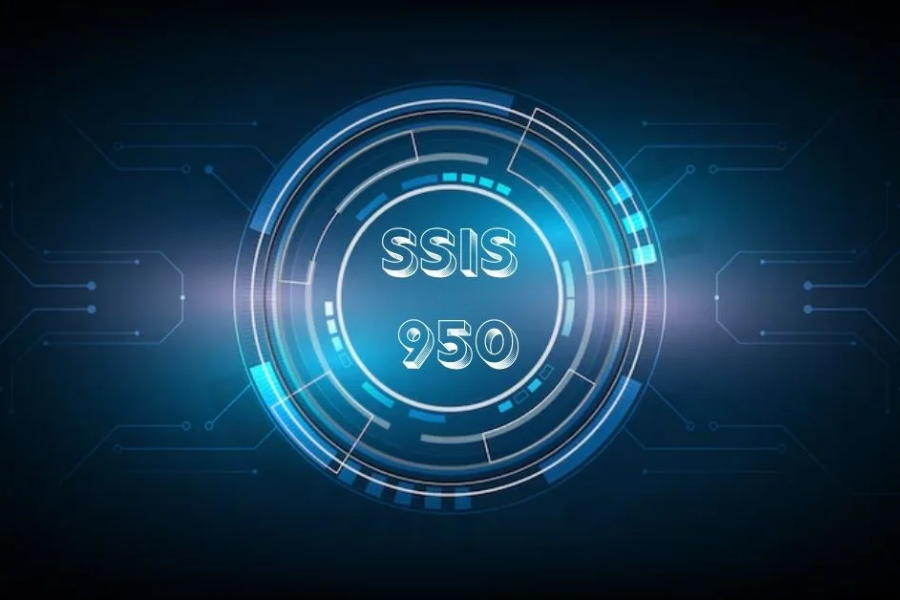SSIS 950: Revolutionizing Data Integration with Enhanced Performance and Security
Introduction
In the realm of data management, efficiency, accuracy, and security are paramount. SQL Server Integration Services 950 (SSIS 950) has significantly advanced the field of data integration. This article delves into SSIS 950, covering its evolution, key features, applications, benefits, challenges, and future directions.
What is SSIS 950?
SQL Server Integration Services (SSIS 950) is a robust set of tools offered by Microsoft SQL Server for data integration. It provides advanced capabilities for creating efficient data integration and workflow solutions, facilitating the extraction, transformation, and loading (ETL) of data from diverse sources into target systems.
Milestones in SSIS Development
Data Transformation Services (DTS) in SQL Server 7 (1998)
The journey of data integration tools began with DTS, which provided basic capabilities for data export, import, and task automation, though its connection and task options were limited.
SQL Server 2000: As SQL Server gained traction, DTS evolved, transitioning from SQL Server Enterprise Manager to SQL Server Management Studio (SSMS). This upgrade brought more connections and tasks, enhancing its functionality.
SQL Server 2005 (SSIS 2005): The introduction of SSIS marked a significant advancement, with Business Intelligence Development Studio (BIDS) enabling developers to create complex packages. This development significantly expanded the functionality of SSIS, making it a powerful tool.
SQL Server 2008 (SSIS 2008): SSIS continued to advance with features such as ADO.NET source, Data Profiler, improved lookup transformations, and support for Change Data Capture, further enhancing its capabilities.
SQL Server 2012 (SSIS 2012): The transition from BIDS to SQL Server Data Tools (SSDT), an extension of Visual Studio, brought new features like SSIS Deployments, Zoom, Undo, and additional connectors, broadening its functionality.
SQL Server 2014 (SSIS 2014): SSDT became integrated into Visual Studio, requiring separate installation, and continued to expand with more options for data integration tasks.
SQL Server 2017 (SSIS 950): SSIS 950 introduced Scale Out Master and Worker features for improved scalability, support for Microsoft Dynamics AX and CRM in OData components, and compatibility with Linux, marking a significant enhancement in its capabilities.
Highlighting SSIS 950 Features
Streamlined Data Integration
SSIS 950 features a user-friendly interface that makes designing complex data flows simpler and more efficient. Its visual drag-and-drop functionality allows developers to easily connect data sources, apply transformations, and set destinations. The use of reusable components, such as custom tasks and scripts, further boosts productivity by utilizing pre-built functionalities.
Enhanced Performance and Scalability
SSIS 950 incorporates performance enhancements that improve data movement and processing speeds. With its parallel processing capabilities, the tool can handle multiple tasks simultaneously, offering both scalability and improved performance. Whether managing small datasets or large volumes of data, SSIS 950 adapts effectively to various integration needs.
Enhanced Security Features
Enhanced Security Features in SSIS 950
Security is a key focus in data integration, and SSIS 950 offers several upgrades to safeguard data:
- Encryption: SSIS 950 provides robust encryption options for both data at rest and in transit, allowing users to secure sensitive information within packages and connections.
- Access Control: The platform includes advanced access control features that restrict modifications and executions of SSIS packages to authorized users only.
- Credential Management: SSIS 950 comes with built-in tools for securely managing credentials, including database connection strings, ensuring that sensitive information is protected.
- Sensitive Data Handling: Users can designate specific columns as sensitive, which helps prevent accidental data exposure and supports compliance with data privacy regulations.
Advantages of Utilizing SSIS 950
Enhanced Information Quality
SSIS 950 significantly boosts data quality by leveraging its extensive ETL capabilities. Organizations can ensure their data is accurate, reliable, and free from errors. The platform’s data cleansing and transformation tools help identify and rectify anomalies, leading to higher data quality.
Improved Business Insights
SSIS 950 enables organizations to consolidate data from various sources into a unified view, offering a comprehensive understanding of business operations. This integrated data can be analyzed with tools like Power BI, leading to better business insights and more informed decision-making.
Uses of SSIS 950
Data Warehousing
SSIS 950 plays a crucial role in data warehousing by extracting data from various sources, transforming it to meet business requirements, and loading it into a centralized data warehouse. This capability allows organizations to efficiently store and analyze large volumes of data.
Data Migration
For organizations undergoing system upgrades or transitioning to new platforms, SSIS 950 provides robust data migration support. It ensures smooth and accurate data transfer from legacy systems to new environments, minimizing the risk of data loss or corruption.
Data Integration for Business Insights
SSIS 950 is essential for preparing data for business intelligence applications. By integrating data from multiple sources, it facilitates comprehensive analysis and reporting, helping organizations extract valuable insights and make informed strategic decisions.
Cloud Data Integration
As cloud adoption increases, SSIS 950 offers strong integration capabilities with cloud-based platforms like Azure. This ensures seamless data flow between on-premises systems and cloud environments, supporting modern data management practices.
Getting Started with SSIS 950
Getting started with SSIS 950 is easy thanks to its intuitive interface and thorough documentation. Here’s a simplified guide to help you set up and configure SSIS 950:
Installation and Setup
- Download: Obtain SSIS 950 from the official Microsoft website or your organization’s software repository.
- Run Installer: Launch the installer to begin the installation process.
- Choose Installation Type: Select the installation type that fits your needs—standalone, integrated with SQL Server, or custom.
- Configure Settings: Set the installation path, choose the features you need, and configure the authentication mode.
- Complete Installation: Review your choices and finalize the installation process.
Configuration Steps
- Open Tools: After installation, open SQL Server Management Studio (SSMS) or SQL Server Data Tools (SSDT).
- Start Project: Create a new SSIS project or open an existing one.
- Set Up Connections: Configure connection managers to link to your data sources and destinations, such as SQL Server, flat files, or Excel, including required login credentials.
- Create Data Flows: Design data flows to transfer data from sources to destinations by adding and connecting components.
- Manage Workflow: Use control flow tasks to arrange operations, like executing SQL commands or managing files, to control the sequence of processes.
Package Configuration
- Configure Settings: Set up package-level options like logging, event handling, and package parameters.
- Enable Logging: Turn on logging to capture details such as errors and warnings during execution.
- Use Parameters: Utilize package parameters to enhance the flexibility and reusability of your SSIS packages.
Testing and Execution
- Run Debug Mode: Test your SSIS package by running it in debug mode to monitor progress and identify issues.
- Troubleshoot: Address any problems that arise and optimize performance by adjusting settings such as buffer sizes and parallelism.
By following these steps, you can effectively set up, configure, and optimize SSIS 950 for your data integration needs.
The Role of SSIS in Data Integration
The Evolution of SSIS 950
SQL Server Integration Services (SSIS) plays a crucial role in optimizing data integration by ensuring smooth communication between various systems.
Advancements with SSIS 950
Over the years, SSIS has undergone significant evolution to meet the dynamic demands of data management. While earlier versions laid the foundation for data integration, they had their limitations.
Challenges of Previous Versions
Earlier SSIS versions faced challenges related to performance, scalability, and security. They also struggled with integrating new technologies and platforms, leading to compatibility issues.
Key Enhancements in SSIS 950
SSIS 950 addresses these limitations with a host of new features and improvements. It enhances data integration processes, boosts performance, and fortifies security measures, setting a new benchmark in data management.
Conclusion
SQL Server Integration Services 950 (SSIS 950) represents a significant leap forward in the realm of data management, addressing past challenges and setting new standards for efficiency, scalability, and security. Its evolution from the early days of Data Transformation Services to its current state demonstrates a continuous commitment to enhancing data integration capabilities. SSIS 950’s user-friendly interface, advanced performance features, and robust security measures offer organizations a powerful tool for managing complex data workflows. By leveraging SSIS 950, businesses can ensure high-quality data integration, gain deeper insights, and achieve more effective decision-making. As data continues to grow in volume and complexity, SSIS 950 stands as a critical asset for any organization striving to stay ahead in the data-driven landscape.
FAQs
What is SSIS 950?
SSIS 950 is a component of Microsoft SQL Server designed for advanced data integration, providing tools for extracting, transforming, and loading (ETL) data from various sources into target systems. It offers features for streamlining data flows, improving performance, and enhancing security.
How does SSIS 950 differ from earlier versions of SSIS?
SSIS 950 introduces several enhancements over previous versions, including improved scalability with Scale Out Master and Worker features, support for Microsoft Dynamics integrations, and enhanced security measures. These improvements address limitations related to performance, scalability, and integration with new technologies.
What are the key features of SSIS 950?
Key features of SSIS 950 include a user-friendly interface with drag-and-drop functionality, enhanced performance through parallel processing, robust security options such as encryption and access control, and advanced tools for data transformation and integration.
How can SSIS 950 improve data quality for my organization?
SSIS 950 enhances data quality by offering extensive ETL capabilities, allowing for accurate data transformation and cleansing. Its tools help identify and rectify data anomalies, leading to more reliable and high-quality data.
What are some common use cases for SSIS 950?
Common use cases include data warehousing, data migration, business intelligence integration, and cloud data integration. SSIS 950 is used to consolidate data from various sources, ensure smooth transitions between systems, and support comprehensive analysis and reporting.
How do I get started with SSIS 950?
To get started with SSIS 950, download and install it from the official Microsoft website or your organization’s repository. Follow the setup instructions to configure your installation, create and manage SSIS projects using SQL Server Management Studio (SSMS) or SQL Server Data Tools (SSDT), and design data flows and packages for your integration needs.
What are some best practices for optimizing SSIS 950 performance?
Best practices include configuring appropriate buffer sizes, utilizing parallel processing, monitoring and optimizing data flows, enabling logging to capture execution details, and testing packages in debug mode to identify and address performance issues.
Keep up-to-date with breaking news and updates on chagaras







